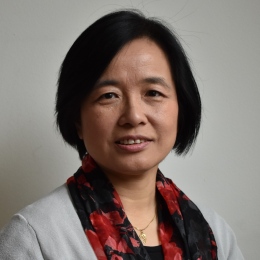Date: Tuesday, March 1, 2022
Time: 11:00 am
Talk Title: 3D electron diffraction/MicroED for ab initio structure determination and high-throughput phase analysis – from porous materials to pharmaceuticals
Zoom Recording

Abstract:
Knowing the 3D arrangement of atoms in a crystalline material is essential for understanding its properties. Electron crystallography has unique advantages in studying nano-sized crystals that are too small for X-ray diffraction. In this talk, I will present new electron diffraction-based techniques developed by our group for collecting integrated 3D ED data; from step-wise rotation electron diffraction (RED) to continuous rotation electron diffraction (cRED). I will demonstrate the power of 3D ED in studying various types of materials, from inorganic porous materials such as zeolites and metal-organic frameworks, to organics and pharmaceuticals.
Today, a complete 3D ED dataset can be obtained in less than a minute on a standard TEM. The data processing, structure solution and refinement are performed using standard X-ray crystallography software. The data can be treated as kinematical data, and the refined structural models can reach better than 0.05 Å in accuracy for all non-H atoms. Using dynamical refinement, more accurate structures and finer structural details can be obtained, including hydrogen location and absolute structures. Serial electron diffraction (SerialED) makes it possible not only for studying extremely beam-sensitive crystals, but also for phase analysis and for detection of minor phases invisible by X-ray diffraction. The developments of new 3D ED and SerialED techniques have revolutionized crystallography, and provided new opportunities for discovering novel structures and materials, and exploring their properties and applications.
Biography:
Xiaodong Zou is a full professor and chair of the Inorganic and Structural Chemistry Unit and deputy head of the Department of Materials and Environmental Chemistry, Stockholm University. She received her Bachelor of Science in Physics 1984 at Peking University and Master of Science in Metal Physics 1986 at Beijing University of Technology, under the supervision of Prof. K.H. Kuo. In 1987 she moved to Sweden to pursue her Ph.D. study and received her PhD in structural chemistry at Stockholm University in 1995. She carried out her postdoctoral research at Lund University, working with the Tage Erlander Professor David R. Veblen from John Hopkins University, USA. She joined the faculty at Stockholm University in 1996 and became professor 2005.
One of her main research interests is method development for accurate atomic structure determination of nano-sized crystals by electron crystallography. Her group has solved a number of complex structures of zeolites and mesoporous crystals by transmission electron microscopy. She is also working on synthesis, structure determination, topology analysis and applications of inorganic open-framework materials and metal-organic frameworks. In 2006, she received 100 MSEK from VR and VINNOVA to build up the Berzelii Center EXSELENT on Porous Materials and was the director 2006-2012. She has > 300 publications and five patents. Her group developed 10 software for quantitative analysis of high-resolution electron microscopy images and electron diffraction patterns. The software has been commercialized and used by > 200 laboratories.

